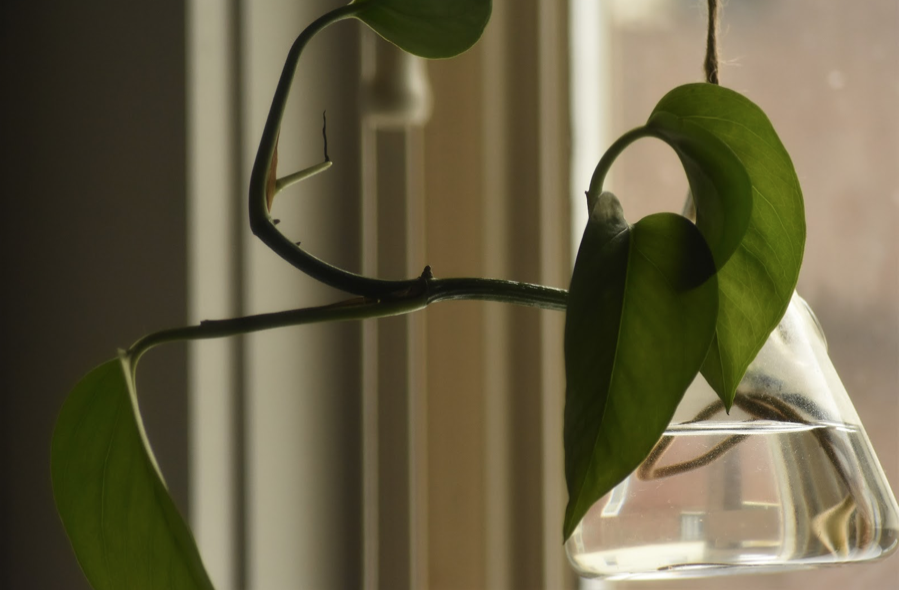Rachel McLaughlin lives in Akron, Ohio with her husband and daughter. She is a former special education teacher and foster mom. As writer and cofounder of @HoldingSpaceForEducators, she strives to open up space for educators to see the challenges of their reality and experiences represented and validated.
Last Christmas, my brother gifted me a plant propagation kit containing three beautiful hanging glass vases and clippings from his collection. Choosing to suspend them above my sink served two important purposes: it’s the only window with generous amounts of light, and being in the kitchen all day as a stay-at-home wife and mom makes me far more likely to remember to care for them. This was largely a “throw it in some water and see what happens” kind of thing. I found pleasure in looking for subtle changes, and I had no idea what adjustments my little plants would make in their effort to survive.
In 2017, I was getting towards the end of my second year as a special education teacher. As I sat down in front of my computer, I began searching for answers to some half-baked questions gnawing away at me. “Why do I feel like I can’t go on?” “Can I be burnt out so early in my career?” “Am I practicing self-care and keeping good boundaries?” “I don’t feel burnt out, but I cannot go on like this.”
I couldn’t keep it together, and I wanted to know what was wrong.
While I haven’t ventured to say this work was “my calling,” I can say with certainty that I longed to be there with a posture of participation in suffering, eager to live out the idea that we do our best work not when we see ourselves on the side of Christ giving to other people, but when we elevate others to the place of Christ and love and serve from there.
While my internet search assured me I was far from the only teacher feeling so depleted, it did little to help me understand my experience. And though I fantasized of ways to escape, I had loans to pay, a commitment for a grant I accepted in college to finish five years of teaching, and this twinge in my chest that seemed to say “but if you leave, Rachel, you will have failed.”
For the first few days, I casually monitored my little clippings, glancing up at them as I washed dishes or meal-prepped. Sometimes, I studied them a bit longer, though. Taking in every curve and hue, I anticipated the first sign of roots. But something else caught my eye first – their stems were turning brown. They were splitting apart. It was as if they couldn’t bother to keep themselves together anymore. They were so new, and yet, they were dying. I wondered in disappointment, what went wrong? But, I decided to let them sit there for a bit. Who knows, I figured, they might heal themselves.
For three more years, I thought I was dying, too. Demoralization, moral injury, vicarious trauma, burnout, postpartum anxiety, and depression: though I eventually stumbled upon language for my experiences, too often I could do little to affect the change needed to make my environment safe and my work sustainable.
As the days went by, I waited and I watched. Would the crack in the stem heal itself? Or would the wound go the whole way and kill my plant? To my surprise, I noticed strange black bumps appear – roots. My torn-open little clipping was growing roots, after all. That’s not a sign of a dying plant.
In yet another desperate search through the internet, I found The Seattle School’s Certificate in Resilient Service. I was tired of hearing the word “resilience” weaponized to blame the failings of a broken system on teachers’ moral weakness. However, phrases on the school’s website – “to actively become more healthy, whole, and holy because of those challenges” and “live into their purpose regeneratively” – led me to conclude that this was a different, truer sense of resilience. I wanted in.
So here’s what I didn’t know about my plant clipping: that browning gap, the “wound,” is not the beginnings of death. It is an opening to make room for a new leaf. New life.
By the time I began the Certificate, I had chosen to resign from teaching. Though I stepped away in confidence, the breaking I felt over the last five years also felt like a wound. I knew I needed to let it break open if I wanted to heal.
It wasn’t long before the women in my circle group bore witness to me coming undone. In those first few days, they sat with me in the tearing open of my story and they held space for the ways I had learned to adapt in order to survive.
They watched with more patience and wisdom than I had with my little plant cuttings. When they looked at me, they didn’t see death – not because I was flourishing – but because they are mature council, experienced propagators. Without fixing or rushing, they bore witness to the subtle changes, waiting expectantly for more fullness to emerge. To me, splitting open felt like death; but they recognized that it was the beginning of life.
This isn’t how I thought new life comes about. But here it is in front of me, the breaking open is the entry point – not an obstacle – towards growth.
And oh, how my plant clipping continues to preach the gospel to me. I only have to read the Easter story to see I am in good company with people who think “death” when there is a tearing open. Jesus’ closest friends grieved when the Bread of Life was broken. But salvation didn’t come despite death, but through it. The Author of Life didn’t write the story of grace despite the fall, but through it. And God isn’t making me new despite my pain – but through it.
I’ve found the greatest peace in my greatest wounds when grace and restoration find their way there. From these wounds, I wait expectantly for more fullness of life to break through. So I praise God in the deepest pain; it’s there I experience the greatest joy.


